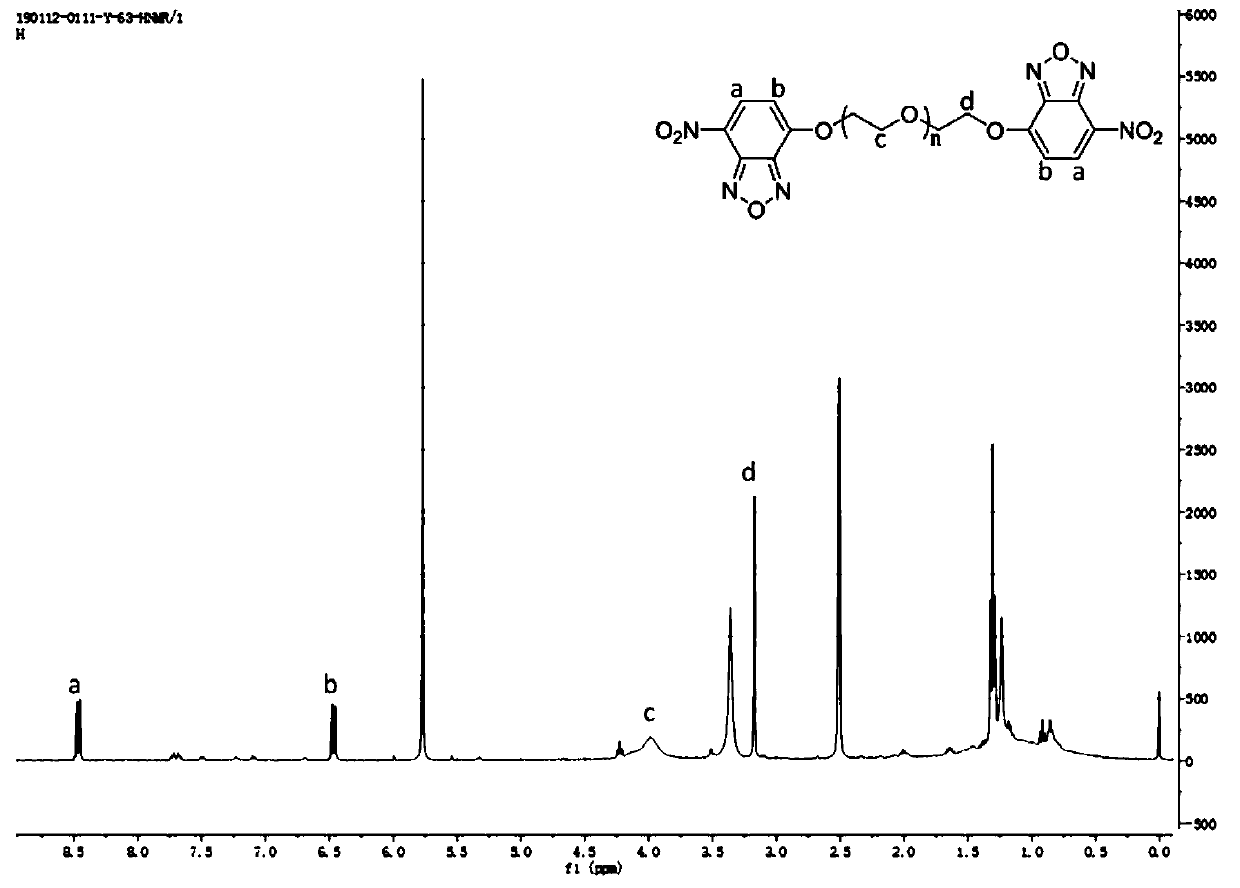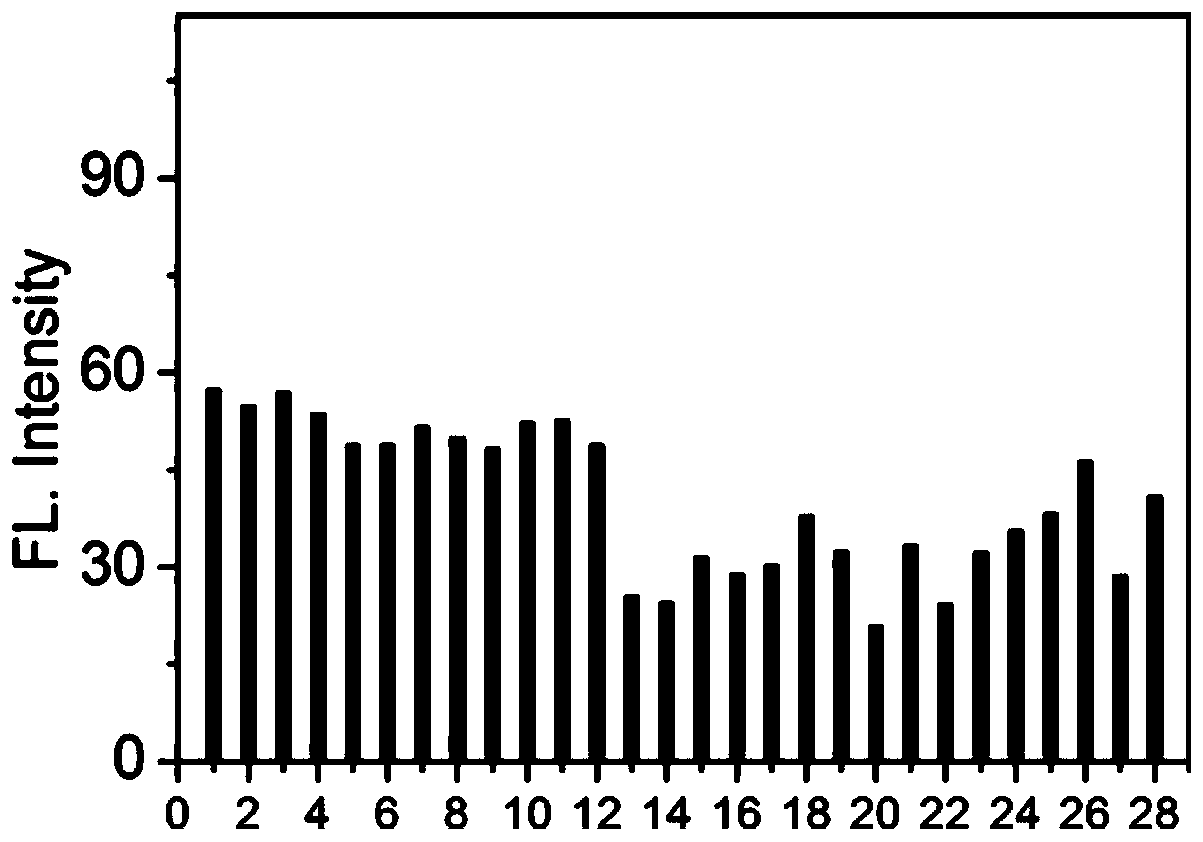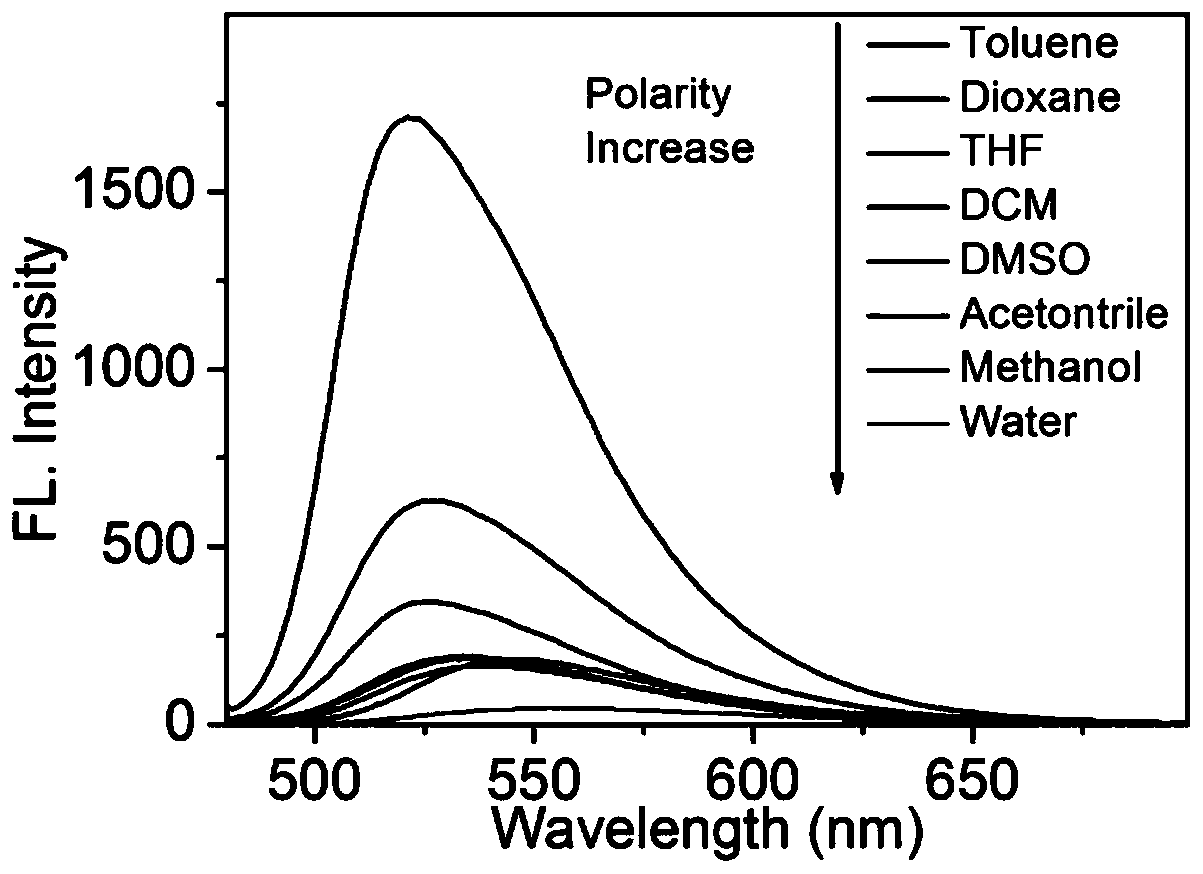Fluorescence probe for detecting lipid droplets and production method and application thereof
A fluorescent probe and lipid droplet technology, applied in the field of analytical chemistry, can solve the problems of poor photostability, easy to be bleached, and unstable imaging process, etc., and achieve the effects of good photostability, easy purification, and fast response speed
- Summary
- Abstract
- Description
- Claims
- Application Information
AI Technical Summary
Problems solved by technology
Method used
Image
Examples
Embodiment 1
[0025] Example 1 Synthesis of Fluorescent Probe PEG-NBD
[0026]
[0027] In a 25 mL eggplant-shaped flask, add 0.2 g PEG-200 and 10 mL dichloromethane, then add 0.5 g 4-chloro-7-nitrobenzo-2-oxa-1,3-oxadiazole (NBD- Cl), finally add a few drops of triethylamine (TEA), and react at room temperature for 24 hours under the protection of nitrogen. The obtained crude product was rotary evaporated, and petroleum ether / dichloro (V / V) = 2:1 was used as the eluent, and the product PEG-NBD was purified through a silica gel column. That 1 H NMR spectrum such as figure 1 .
Embodiment 2
[0028] Embodiment 2 The selectivity of fluorescent probe PEG-NBD
[0029] Prepare 5 mL of PBS (pH=7.4) aqueous solution of amino acids, metal ions, and active oxygen at a concentration of 100 mM and the fluorescent probe PEG-NBD mother solution obtained in Example 1 at a concentration of 1 mM for future use.
[0030] Add 20 μL probe mother solution, 200 μL DMSO and 100 equivalents of amino acids, ions, thiols and reactive oxygen species, dilute to 2 mL with phosphate buffer solution PBS, shake well and perform fluorescence detection (λ ex = 470 nm), establish a histogram of fluorescence intensity and each ion (amino acid or active oxygen), the results are as follows figure 2 , 1-28 added detection substances were PBS solution, arginine, serine, alanine, aspartic acid, glutamic acid, histidine, isoleucine, threonine, glutamine, N -Acetyl-L-cysteine, N-acetylglycine, aluminum chloride, calcium chloride, copper chloride, ferrous sulfate, potassium iodide, magnesium chloride, so...
Embodiment 3
[0031] Example 3 Fluorescence spectra of fluorescent probe PEG-NBD in different polar solvents
[0032] Choose eight solvents with different polarities, including water, methanol, acetonitrile, dimethyl sulfoxide, dichloromethane, tetrahydrofuran, dioxane and toluene; prepare 5 mL of the fluorescent probe obtained in Example 1 with a concentration of 1 mM The PEG-NBD mother solution was used as a backup. The final concentration of the prepared probe was 5 µg / mL, which were added to solvents of different polarities, and the fluorescence detection (λ ex = 460 nm), and its fluorescence spectrum is shown in image 3 shown. Depend on image 3 It can be seen that the fluorescence intensity varies greatly depending on the polarity of the solution, and the greater the polarity, the lower the fluorescence, indicating that the fluorescent probe PEG-NBD has a polar response.
PUM
 Login to View More
Login to View More Abstract
Description
Claims
Application Information
 Login to View More
Login to View More - R&D
- Intellectual Property
- Life Sciences
- Materials
- Tech Scout
- Unparalleled Data Quality
- Higher Quality Content
- 60% Fewer Hallucinations
Browse by: Latest US Patents, China's latest patents, Technical Efficacy Thesaurus, Application Domain, Technology Topic, Popular Technical Reports.
© 2025 PatSnap. All rights reserved.Legal|Privacy policy|Modern Slavery Act Transparency Statement|Sitemap|About US| Contact US: help@patsnap.com



